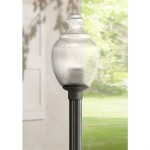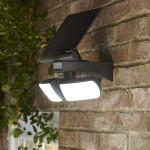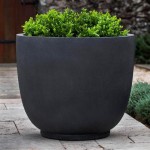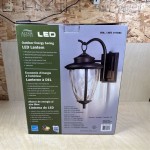3M Command Hooks: A Versatile Outdoor Solution
3M Command Hooks have become a ubiquitous presence in interior decorating, praised for their damage-free hanging capabilities. However, the application of Command Hooks extends beyond the confines of the home. Specifically, 3M offers a range of Command Hooks engineered for outdoor use, providing a convenient and reliable alternative to traditional methods like nails and screws for various outdoor decorating and organizational needs. This article delves into the features, applications, and considerations surrounding the use of 3M Command Hooks designed for exterior environments.
The key distinction between indoor and outdoor Command Hooks lies in their adhesive formulation and construction. Outdoor hooks utilize a specially formulated adhesive that is designed to withstand exposure to the elements. This includes resistance to moisture, fluctuating temperatures, and UV radiation. The adhesive strips are typically thicker and more robust than their indoor counterparts, ensuring a stronger and more durable bond with the mounting surface. Furthermore, the plastic used in the hook itself is often formulated to resist degradation from sun exposure, preventing it from becoming brittle and cracking over time.
The versatility of 3M Command Hooks for outdoor use is a significant advantage. They eliminate the need for drilling holes, which can damage surfaces like siding, fences, and doors. This is particularly beneficial for renters who may not be permitted to make permanent alterations to the property. Moreover, Command Hooks offer a clean and easily removable solution, leaving behind no sticky residue or unsightly holes. This makes them ideal for temporary decorations, seasonal displays, or for organizing outdoor spaces without causing lasting damage.
Understanding the Key Features of Outdoor Command Hooks
To effectively utilize 3M Command Hooks outdoors, it is crucial to understand the specific features that make them suitable for external applications. These features directly impact their performance and longevity in outdoor environments.
Water Resistance: One of the primary requirements for outdoor adhesives is water resistance. Outdoor Command Hooks are designed to maintain their adhesive strength even when exposed to rain, humidity, and other forms of moisture. The adhesive is formulated to resist breakdown and maintain its bond with the surface. However, it's important to note the distinction between water resistance and waterproofing. While outdoor Command Hooks can withstand moderate exposure to water, prolonged submersion or heavy rainfall may eventually weaken the adhesive bond. Therefore, it's advisable to choose locations that offer some degree of protection from direct and constant water exposure.
Temperature Resistance: Outdoor temperatures can fluctuate dramatically, ranging from freezing in winter to scorching heat in summer. Outdoor Command Hooks are designed to withstand these temperature extremes without losing their adhesive properties. The adhesive is formulated to maintain its flexibility and bond strength within a specified temperature range. This range is typically indicated on the product packaging and should be consulted before application. Exceeding the recommended temperature range can compromise the adhesive's effectiveness and potentially lead to hook failure.
UV Resistance: Prolonged exposure to ultraviolet (UV) radiation from sunlight can degrade many materials, including adhesives and plastics. Outdoor Command Hooks are made with UV-resistant materials to prevent premature aging and degradation. The adhesive is formulated to resist breakdown from UV exposure, and the plastic components are designed to prevent discoloration, cracking, and brittleness. However, even with UV resistance, prolonged and intense sun exposure can eventually affect the hook's lifespan. Therefore, consider choosing locations that offer some degree of shade or protection from direct sunlight.
Weight Capacity: Command Hooks, both indoor and outdoor, are designed with specific weight capacities. It is paramount to adhere to these weight limits to prevent the hook from failing. The weight capacity is typically indicated on the packaging and should be carefully considered based on the weight of the item being hung. Overloading a Command Hook can result in the hook detaching from the surface, potentially causing damage to the item being hung or creating a safety hazard. When in doubt, it is always advisable to choose a hook with a higher weight capacity than needed.
Diverse Applications of Outdoor Command Hooks
The adaptability of 3M Command Hooks lends itself to a wide array of applications in outdoor settings. From decorating patios to organizing garages, these hooks offer a convenient and damage-free solution for numerous tasks.
Holiday Decorations: One of the most common uses for outdoor Command Hooks is hanging holiday decorations. These hooks can be used to hang string lights, wreaths, garlands, and other decorative items on doors, windows, fences, and railings. The damage-free removal of Command Hooks is particularly advantageous during the post-holiday season, as it eliminates the need to patch holes or remove unsightly nails. When hanging lights, ensure the lights themselves are rated for outdoor use and that the weight of the lights does not exceed the hook's weight capacity.
Outdoor Lighting: Beyond holiday lights, Command Hooks can be used to hang other types of outdoor lighting, such as lanterns, string lights for patios, and pathway lights. This allows for creating ambient lighting in outdoor spaces without the need for permanent wiring or fixtures. Ensure that the cords are properly secured and protected from the elements to prevent damage or electrical hazards. Consider using weatherproof extension cords and cable clips for added safety and organization.
Gardening and Plant Support: Command Hooks can be used to support lightweight hanging plants, wind chimes, and other garden decorations. They can be attached to fences, walls, or even tree trunks (with caution, ensuring no harm to the tree) to create vertical gardening displays. Be mindful of the weight of the plants, especially when they are wet after watering. Choose hooks with sufficient weight capacity to support the plants' weight. For heavier plants, consider using multiple hooks for added support.
Organizing Outdoor Spaces: Command Hooks can be used to organize garages, sheds, and patios. They can be used to hang tools, gardening equipment, sports equipment, and other items, keeping them off the ground and easily accessible. This helps to maximize space and prevent clutter. When organizing outdoor spaces, consider using hooks of different sizes and weight capacities to accommodate various items. Clearly label each hook to indicate its intended use and weight limit.
Securing Cables and Wires: In outdoor settings, loose cables and wires can pose safety hazards and create an unsightly mess. Command Hooks can be used to secure these cables and wires to walls, fences, or other surfaces, keeping them out of the way and preventing tripping hazards. Use cable clips or ties in conjunction with Command Hooks to ensure that the cables are securely attached. When securing cables, avoid placing hooks in areas where they are likely to be stepped on or damaged.
Best Practices for Outdoor Command Hook Application
Proper application is crucial for ensuring the long-term performance of 3M Command Hooks in outdoor environments. Failure to follow the recommended application procedures can result in premature hook failure and potential damage.
Surface Preparation: The surface onto which the Command Hook will be applied must be thoroughly cleaned and dried. Use a clean cloth and rubbing alcohol to remove any dirt, grease, or debris. Allow the surface to dry completely before applying the adhesive strip. Avoid using household cleaners or soaps, as these can leave behind residues that interfere with the adhesive bond. For porous surfaces like brick or concrete, it may be necessary to use a wire brush to remove loose particles and then clean with rubbing alcohol.
Adhesive Strip Application: Remove the protective liner from the adhesive strip and firmly press it onto the back of the Command Hook. Then, remove the remaining protective liner and press the hook firmly onto the prepared surface. Apply consistent pressure for at least 30 seconds to ensure a strong bond. Avoid touching the adhesive strip with your fingers, as this can transfer oils and reduce its stickiness. For heavier items, consider using multiple adhesive strips for added security. Verify that the adhesive strip is fully in contact with the surface without air gaps or wrinkles.
Waiting Time: After applying the Command Hook, it is essential to wait a specified amount of time before hanging anything on it. This allows the adhesive to fully cure and bond with the surface. The recommended waiting time is typically indicated on the product packaging and is usually around one hour. Avoid rushing the process, as this can compromise the adhesive bond and potentially lead to hook failure. In colder temperatures, it may be necessary to extend the waiting time to ensure proper adhesion.
Environmental Conditions: Avoid applying Command Hooks in extreme weather conditions, such as heavy rain or freezing temperatures. These conditions can interfere with the adhesive bonding process and reduce the hook's effectiveness. If possible, apply the hooks on a dry and mild day. If you must apply the hooks in colder temperatures, consider warming the surface with a hairdryer before application to improve adhesion. Avoid applying the hooks in direct sunlight, as this can cause the adhesive to dry out too quickly.
Removal Process: When removing Command Hooks, it is crucial to follow the proper removal procedure to avoid damaging the surface. Slowly pull the adhesive strip straight down, parallel to the wall, until it releases from the surface. Avoid pulling the hook away from the wall, as this can damage the paint or surface. If the adhesive strip breaks during removal, use pliers or tweezers to grasp the remaining portion and continue pulling it down. If any residue remains on the surface, it can typically be removed with rubbing alcohol or a specialized adhesive remover. Avoid using harsh chemicals or abrasive cleaners, as these can damage the surface.
By understanding the features, applications, and best practices outlined above, users can effectively utilize 3M Command Hooks for outdoor use, achieving damage-free decorating and organizational solutions in their outdoor spaces. Taking the time to properly prepare the surface and choose the appropriate hook for the task will ensure optimal performance and longevity of the attachment.

Command Outdoor Stainless Steel Wire Hooks 3m United States

Command Outdoor Light Clips 3m United States

Command Outdoor Light Clips 3m United States

Command Outdoor Light Clips Clear Damage Free Decorating 16 And 20 Strips 17017clr Aw The Home Depot

Command Outdoor Large Window Hook 3m United States

Command Outdoor Hooks 17091clr Aw Ef Clear Medium 2 4 Strips Pack 3m

3m Command Outdoor Window Hook With Clear Strips Michaels

Command Outdoor Light Clips Clear Damage Free Decorating 16 And 20 Strips 17017clr Aw The Home Depot

Command Outdoor Light Clips 3m United States

Buy 3m Command Hooks M For Outdoor Use In Oval Shape Transpa Content 2 Pc S Conrad Electronic
Related Posts







